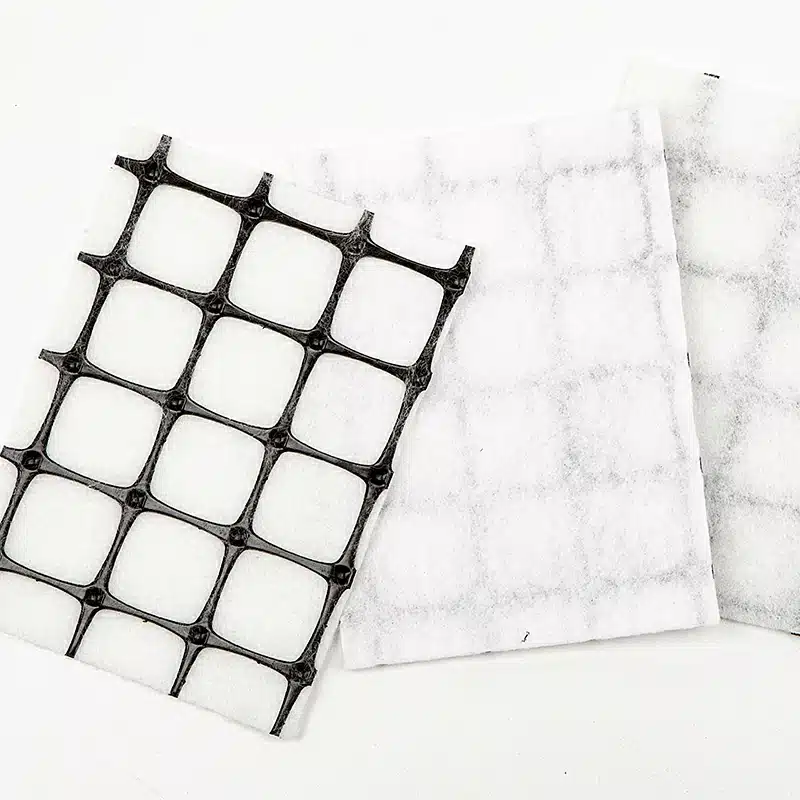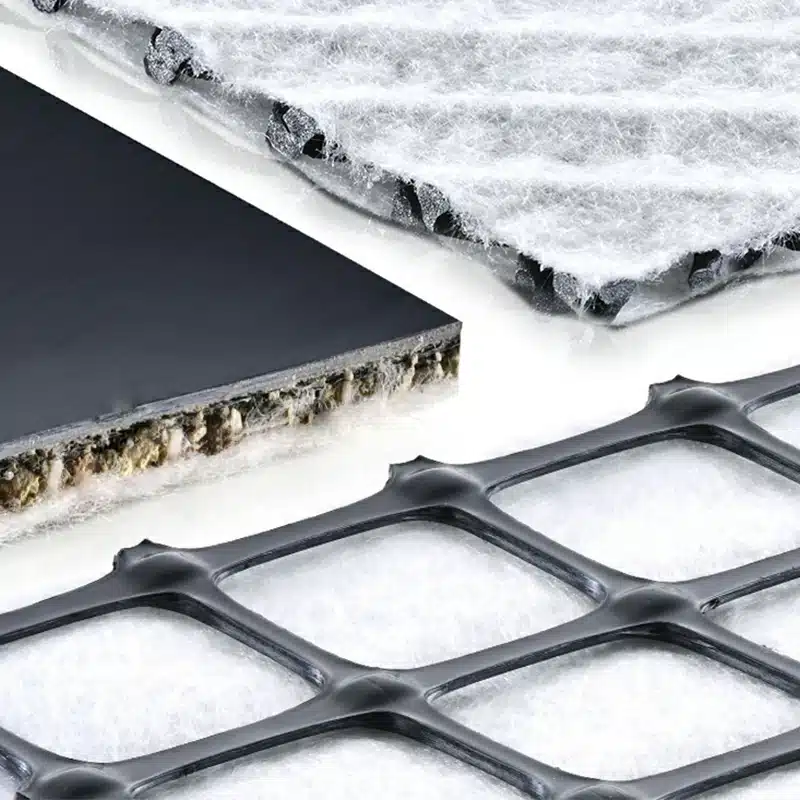+86-159 9860 6917
info@geofantex.com
geofantex@gmail.com
+86-400-8266163-44899
Modern drainage geocomposites are advanced materials designed to improve the efficiency and durability of drainage systems in civil engineering, construction, and environmental projects. These multi-layered systems combine the benefits of geotextiles, geonets, and geomembranes to provide superior drainage, filtration, and soil stabilization solutions. In this article, we explore the concept of geocomposite drainage layers, how they differ from geotextiles, the role of modern drainage systems, and the diverse applications of geocomposites in today’s infrastructure projects.
What is a geocomposite drainage layer?
A geocomposite drainage layer is a multi-layered material designed to facilitate drainage and improve soil stabilization. It is made up by associating, during production, a draining core layer (it can be either a mat, a net, or a moulded element) between two layers of geotextiles. The geotextile allows water to pass through while preventing soil particles from clogging the drainage system, and the core provides a path for water flow. These layers work together to manage water efficiently, making geocomposites ideal for applications such as landfills, retaining walls, and road construction.

What is the difference between geotextile and geocomposite?
The key difference between geotextile and geocomposite lies in their structure and functionality. A geotextile is a single-layer permeable fabric, typically used for filtration, separation, and reinforcement in soil-related applications. In contrast, a geocomposite consists of a combination of one or more geosynthetics, specifically a geogrid, a geotextile, a geomembrane, and/or a geonet, with another material. This combination enhances the drainage and filtration capabilities of the system, making geocomposites more versatile and effective in complex projects requiring both filtration and drainage.
What is modern drainage system?
A modern drainage system is an engineered solution designed to manage surface and subsurface water efficiently, preventing water accumulation and ensuring the stability of structures. These systems often incorporate advanced materials like geocomposites to enhance water flow, prevent soil erosion, and maintain the longevity of infrastructure. Additionally, corrugated, flexible, and perforated plastic pipe lines wrapped with an envelope or filter material are used to improve the permeability around the pipes and to prevent the entry of soil particles. Modern drainage systems are commonly used in roadways, embankments, and foundations, where proper water management is critical to avoiding damage and maintaining structural integrity.
What are geocomposites used for?
Geocomposites are used in a wide range of applications that require effective separation, drainage, filtration, and soil reinforcement. They are commonly employed in landfill liners to control leachate, in road construction for subgrade stabilization, in retaining walls to prevent water buildup, and in green roofs to ensure proper drainage. Their versatility and ability to combine various geosynthetic materials make geocomposites a popular choice for complex projects where traditional solutions might not be sufficient.
Modern drainage geocomposites offer a cutting-edge solution for improving drainage, filtration, and soil stabilization in various engineering projects. By combining layers of geotextiles, geonets, and geomembranes, these materials enhance the efficiency of water management systems while providing long-term durability. Whether in landfills, roadways, or retaining walls, geocomposites are essential for ensuring the stability and functionality of modern infrastructure projects.



Get Free Sample
We’ll respond as soon as possible(within 12 hours)






















